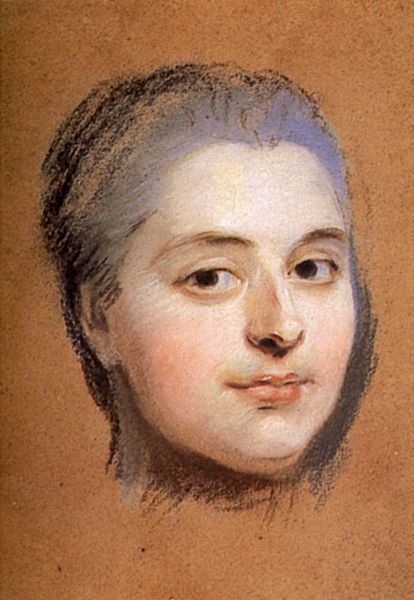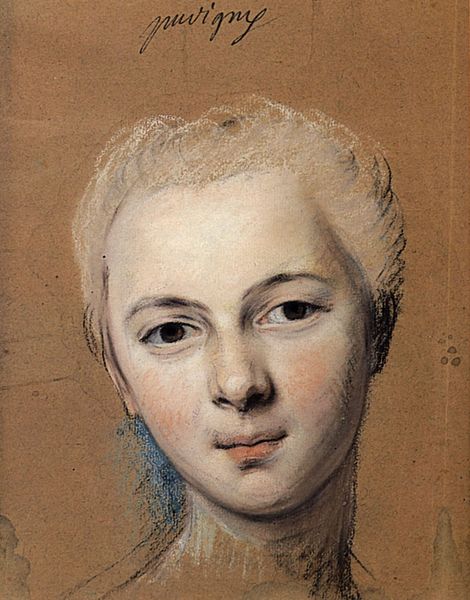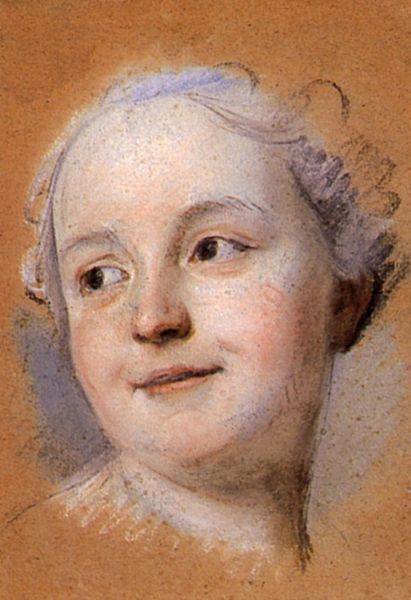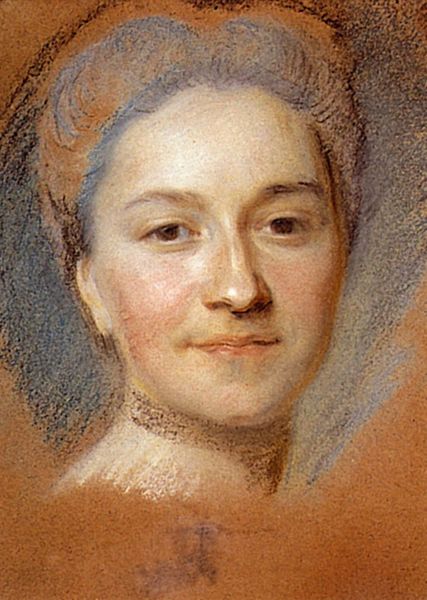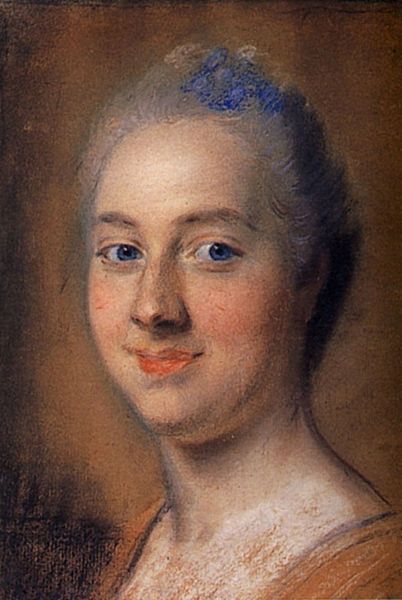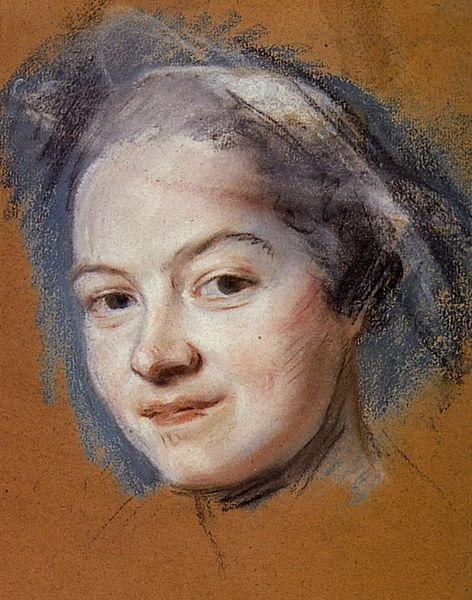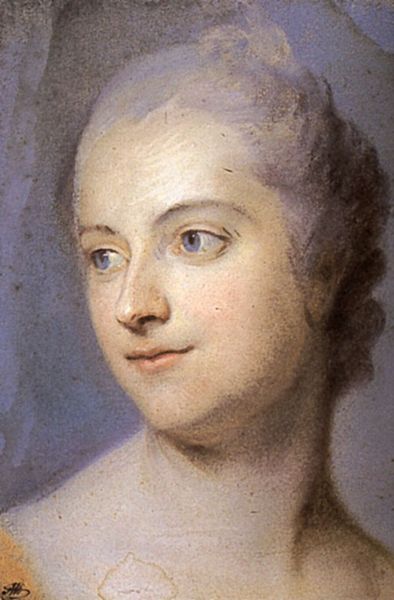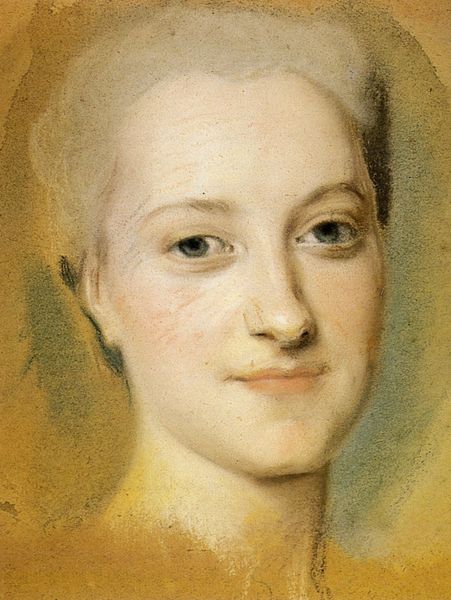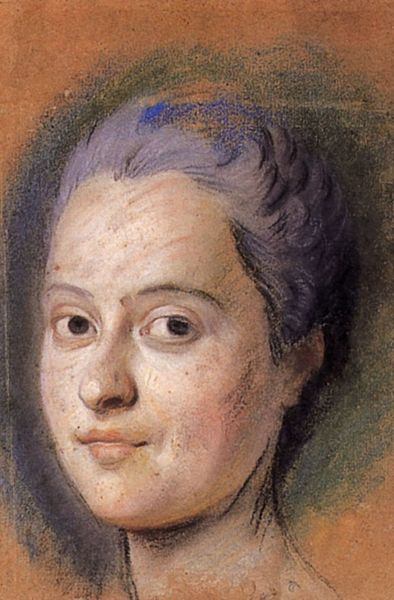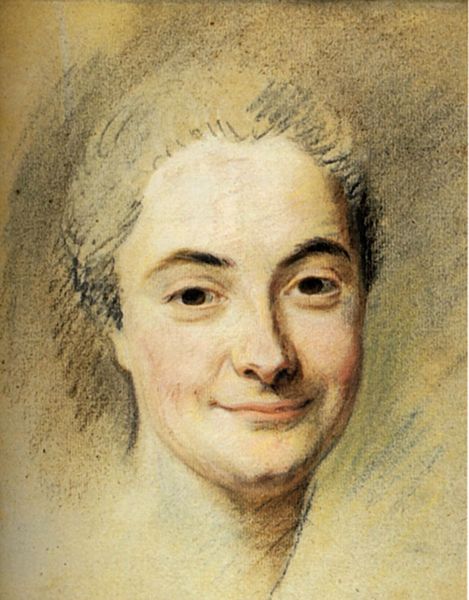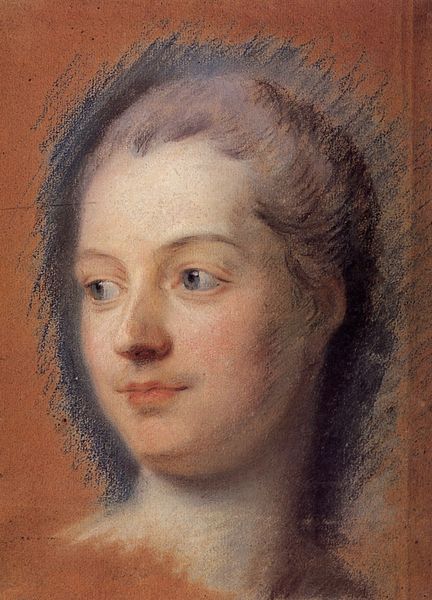
drawing, dry-media, pastel
#
portrait
#
drawing
#
head
#
face
#
dry-media
#
portrait reference
#
portrait head and shoulder
#
animal portrait
#
animal drawing portrait
#
nose
#
portrait drawing
#
facial study
#
pastel
#
facial portrait
#
forehead
#
portrait art
#
female-portraits
#
fine art portrait
#
rococo
#
digital portrait
Copyright: Public domain
Editor: Here we have "Mademoiselle Camargo" by Maurice Quentin de la Tour, likely a pastel drawing. It's a close-up portrait, and I’m immediately struck by how direct her gaze is, almost challenging. How do you read this portrait? Curator: The direct gaze is certainly key. Consider the context: La Tour was a leading portraitist in the Rococo era, capturing the elite. But more than just likeness, these portraits performed social work. In representing Mademoiselle Camargo, a celebrated ballerina, La Tour isn't just showing us her face. He's negotiating the space between artistry and celebrity, female agency, and the male gaze. How does that reading sit with you? Editor: It's interesting to think about her gaze as active, rather than passive. It challenges the idea of her merely being an object of beauty. Curator: Precisely. Think about the burgeoning celebrity culture of the time. Camargo, as a dancer, was already pushing boundaries. Her presence in a portrait like this is a negotiation of power. Does the portrait flatten her into another pretty face, or does it capture something of her professional strength and individuality? Consider how La Tour uses pastel to create both softness and precision. Is he reinforcing or subverting expectations? Editor: I think there's definitely a sense of intelligence in her expression that goes beyond just beauty. Seeing her within this broader social and historical framework really opens up new perspectives. I'll never look at another Rococo portrait the same way! Curator: And hopefully it encourages you to question whose stories are told, and how, through the lens of art history and social power. Portraits aren't just records of appearance, but documents of cultural performance.
Comments
No comments
Be the first to comment and join the conversation on the ultimate creative platform.
